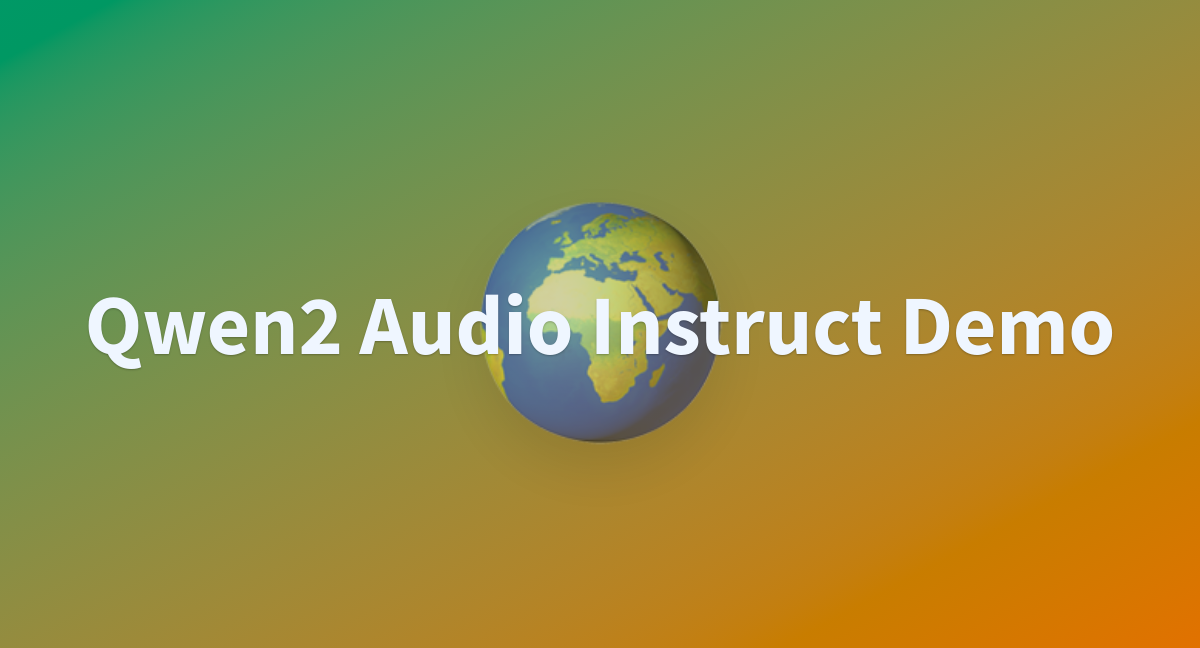Qwen2-Audio
by Alibaba's Tongyi Qianwen TeamQwen2-Audio is an open-source AI speech model by Alibaba's Tongyi Qianwen team, supporting direct voice input and multilingual text output.
What is Qwen2-Audio?
Qwen2-Audio is an open-source AI speech model developed by Alibaba's Tongyi Qianwen team. It supports direct voice input and multilingual text output, enabling features like voice chat, audio analysis, and support for over 8 languages. The model excels in performance on benchmark datasets and is integrated into Hugging Face's transformers library, making it accessible for developers. It also supports fine-tuning for specific applications.
Key Features
- Voice Chat: Direct interaction with the model using voice, eliminating the need for ASR conversion.
- Audio Analysis: Analyze audio content based on text instructions, recognizing speech, sounds, and music.
- Multilingual Support: Supports multiple languages and dialects including Chinese, English, Cantonese, and French.
- High Performance: Outperforms previous models on multiple benchmark datasets.
- Easy Integration: Integrated into Hugging Face's transformers library for convenient use and inference.
- Fine-Tunability: Supports fine-tuning through the ms-swift framework to adapt to different application needs.
Technical Details
- Multimodal Input Processing: Processes both audio and text inputs, converting audio into numerical features.
- Pre-training and Fine-Tuning: Pre-trained on multimodal data and fine-tuned for specific tasks.
- Attention Mechanism: Strengthens the association between audio and text for better context understanding.
- Conditional Text Generation: Generates response text based on given audio and text conditions.
- Encoder-Decoder Architecture: Processes input audio and text, and generates output text.
- Transformer Architecture: Uses the Transformer architecture for sequence data processing.
- Optimization Algorithms: Utilizes optimization algorithms like Adam for training.
Use Cases
- Smart Assistants: Acts as a virtual assistant for voice-based interactions.
- Language Translation: Enables real-time voice translation for cross-language communication.
- Customer Service Centers: Automates customer service inquiries and issue resolution.
- Audio Content Analysis: Analyzes audio data for sentiment analysis, keyword extraction, or speech recognition.
Getting Started
- Demo: Qwen2-Audio Instruct Demo
- GitHub Repository: Qwen2-Audio GitHub
- Technical Paper: arXiv Paper
Model Capabilities
Model Type
multimodal
Supported Tasks
Voice Chat
Audio Analysis
Multilingual Text Generation
Speech Recognition
Language Translation
Tags
AI Speech Model
Multilingual
Open-Source
Voice Chat
Audio Analysis
Text Generation
Hugging Face
Fine-Tuning
Developer Tools
Natural Language Processing
Usage & Integration
Pricing
free
API Access
Available
License
Open Source
Screenshots & Images
Primary Screenshot

Additional Images
Stats
96
Views
0
Favorites
